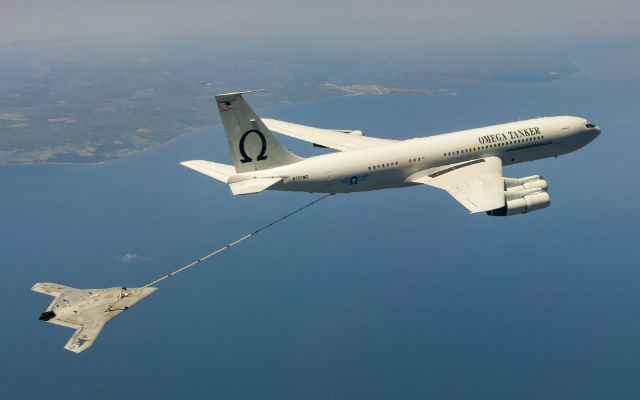The US Government Accountability Office has warned that unless the US Navy carefully considers its requirements for the service's future unmanned, carrier-launched surveillance and strike (UCLASS) programme it risks rendering redundant any research carried out so far.
While UCLASS has been delayed by some three years amid indecision on the likely role for the aircraft, testing has been carried out on the Northrop Grumman X-47B unmanned combat air vehicle (UCAV) demonstrator that most recently achieved an aviation first when it performed an autonomous in-flight refuelling in mid-April.
"Ongoing debate about whether the primary role of the UCLASS system should be mainly surveillance with limited strike or mainly strike with limited surveillance has delayed the programme," the GAO says in a report released on 4 May. "The knowledge the navy has obtained about the resources needed to develop the UCLASS system may no longer be applicable depending on what requirements are finally chosen."
The GAO says that if the final UCLASS requirements emphasise a strike role with limited surveillance, the navy will likely need to "revisit its understanding of available resources in the areas of design knowledge, funding, and technologies" before awarding an air system development contract.
The future of the two X-47B demonstrators also remains unclear. As it stands, funding is exhausted, with the navy having spent some $1.5 billion on their development. The two prototype aircraft are expected to be retired to a museum.
However, Scott Winship, programme manager for unmanned combat air systems at Northop Grumman, says there is still testing that could be carried out to keep the capability relevant until the UCLASS is brought into service in around 2023.
“I think there is a difference between proving it and proving it is possible,” Winship says, noting that there is scope to repeat testing in different conditions.
“I think we need to do this capability along with precision guidance, trying to fly the aircraft in other than just an austere test environment, track the tanker through its turns, do testing with manned airplanes nearby and positioning it to the aft position – if you want to make this operational it’s a different animal than proving it is possible.”

US Naval Air Systems Command
While Capt Beau Duarte, the USN programme lead, claims that X-47B was conceived as a demonstrator “from the ground up”, and some systems would have to be swapped out in order to make it more rugged, Winship says that the demonstrators always had operational capability at their core.
“You had to have a flying wing shape and we chose not to make it low observable, but we were tasked by the navy to make it relevant to a flying wing,” Winship says. “You had to essentially make it an operational aeroplane in a test uniform.”
Duarte says that while it would be a possible to “rip out the guts” of X-47B to make it more operationally relevant, that is sufficiently costly to discourage the navy.
“You can’t say that we have the wrong architecture or the wrong guts – how can it be more cost efficient to build new airplanes with the correct architecture than just change out if you want to change?” Winship adds. “The aircraft are at the peak of efficiency at the moment, and the more things we can learn the better off we will be.”
He says that possible future testing, should more funds become available, would include sensor integration testing, concert flights around an aircraft carrier, and integrating the Joint Precision Approach and Landing System.
While the aircraft are technically navy property, Northrop could take the aircraft and carry out its own testing.
“We would be willing to take the aircraft back before we see them chomped up or buried in the ground,” he says, noting that it could approach the US Air Force regarding testing.
“The navy has been making history with these, and we stand ready to go and do anything else that is required,” Winship notes.
Source: Flight Daily News






















